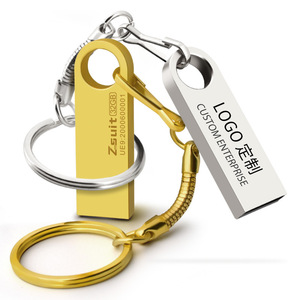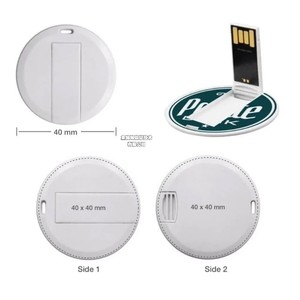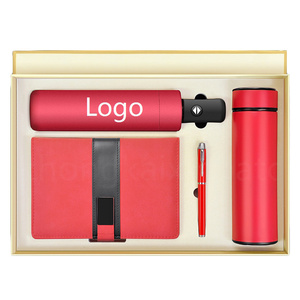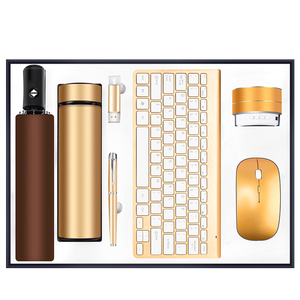Types of Marketing USBs
Using a Universal Serial Bus (USB) flash drive for marketing is a clever and creative way to capture the target market's attention. These USBs are great promotional items that can be imprinted with the company’s logo. They can also be customized to meet different shapes and designs that fit the specific use. There are various types of marketing USBs, and each can be tailored to fit distinct customer needs.
- Custom USB Drives: Custom marketing USBs give businesses total freedom over customization. They allow customers to add their logos, brand names, or unique messages. Simply put, specific customization can be done depending on the drive type and other requirements. Customized USBs are great for creating personalized marketing campaigns.
- Rubber USB Drives: Rubber USB drives are popular and ideal for promoting technology-related companies and startups. They are made from synthetic rubber materials, which makes them flexible and durable. Rubber drives can handle drops and are less likely to break when handled roughly. Their drive casing can be imprinted with brand logos and other marketing messages.
- Metal USBs: Some marketing metal USBs have a shiny metallic finish that looks attractive and sophisticated. They are made using zinc alloy material. Promotional metal USBs are strong and durable. The metal doesn't corrode or rust when exposed to moist or outside air. These marketing USBs can be engraved with logos or texts, giving them a lasting effect.
- Wooden USBs: Wooden USB drives offer a unique and eco-friendly option. The drives have a wooden casing made of bamboo or hardwood. They can be engraved with logos and other details. These USBs are ideal for businesses that want to be viewed as environmentally friendly. They are also great for companies in the wood or furniture industry.
- USB Credit Cards: This type has the shape and size of a credit card. They offer a large printing area that can be imprinted with logos and brand names. USB credit cards are slim, portable, and widely compatible. They are ideal for direct mailing or handing out at conferences.
Features & Functions Of Marketing USBs
Flash drives for marketing purposes have specific features necessary for promotional campaigns. They include the following;
- Storage Capacity: A USB's storage capacity is one of its critical attributes since it will determine how much information the USB can hold. The storage capacity of promotional USBs ranges from 1 GB to 256 GB or more. Determine the target audience's storage needs so that you can choose the right amount of data.
- Data Transfer Speed: The data transfer speed of a USB determines how fast information can be transferred to and from the USB. Different USB types have varying transfer speeds. For example, USB 2.0 is the most common and can transfer data at 1.5Mbps. USB 3.0 and 3.1, on the other hand, are faster versions and can transfer data between 5 and 10 Gbps respectively. Consider the target audience's need for data transfer speed and choose accordingly.
- Customization: Customization enables businesses to personalize marketing flash drives to match their specific branding and promotional needs. Businesses can add their logo, brand colors, and even custom artwork to make the USB drives unique and recognizable. Customized USB drives can also be tailored with useful extras, such as custom packaging, preloading of target-specific data, and personalized engraving, to further strengthen the promotional message and provide a distinctive branding experience.
- Durability: Since USB drives are usually handled frequently, their durability is an important characteristic to take into account. Select USB drives that have been built to withstand regular use, falls, and rough handling. Choose excellent materials and construction techniques that can endure wear and tear over time. To improve durability, consider features like covered connectors, printed graphics that resist fading, and reinforced housings.
- Port Cold: The type of port largely determines the compatibility of a USB with various devices. Common USB port types include standard USB-A, USB-B, USB-C, micro-USB, and lightning connectors. To ensure that the promotional USB drive works with a wide range of gadgets, such as laptops, tablets, smartphones, and gaming consoles, choose a well-known USB connector.
Scenarios
- Storage: They are widely built for a daily needs to save and transfer information between distinct types, although excellent speed and performance are typical criteria for all USBs used in the workplace.
- Applications: Customers can run apps directly from USB flash drives, such as portable applications that don't require installation on the host computer.
- System Boot: USB drives can boot operating systems, which is useful for installing or upgrading systems. In the event of a hard drive failure, this can also be used as a backup to boot the system.
- Disk Diagnostic: To evaluate disk performance, an external hard disk can be connected via USB to run diagnostics.
- Multimedia Playback: USB drives are frequently used to play music, videos, and pictures on multimedia devices like video game consoles, automotive infotainment systems, and multimedia players.
- Security: Encrypted USB drives offer secure data storage and can have features such as biometrics or two-factor authentication for extra security.
- Data Backup: USB drives provide a reliable and practical method for backing up crucial data, files, and documents, including photographs, films, and other private papers.
- USB Marketing: Businesses can use customized USB as a marketing tool to promote their brands or products. When customized USB flash drives are imprinted with the company logo and given away as promotional items at events or as incentives, they serve as a practical and useful marketing tool that can increase brand awareness.
- USB in Education: In the education sector, USBs are often used to distribute educational material, software applications, and portable learning resources. To facilitate student collaboration and group projects, schools and colleges can use USB flash drives as a storage and data transfer medium.
How to choose marketing USBS
When purchasing marketing USB drives in bulk, it's essential to consider the target audience, budget, and customization options. Here are factors to consider when choosing branded USB drives for marketing.
- Storage capacity: The memory capacity of the USB flash drive is an important factor to consider. The storage capacity ranges from 1GB to 256GB or more. Smaller capacities are ideal for marketing campaigns. However, larger sizes are more suitable for storing large amounts of data, such as videos, photo albums, or software programs.
- Customization options: Customization allows businesses to create a unique USB drive that represents their brand. It includes various options such as color selection, adding the drive's shape, and adding brand logos or custom images. Businesses can also choose to engrave or imprint their logos and add custom textures or print styles.
- Distribution method: Businesses should consider how they plan to distribute the promotional USB drives. If they are handing them out at trade shows or events, they might opt for a compact and portable design. If they are shipping them to clients or partners, they may need to choose USB drives with packages suitable for mailing.
- USB drive design: Aesthetics plays a crucial role in attracting users' attention. Depending on the target audience, businesses should choose a drive with eye-catching features, such as LED indicators, logos lights, and unique colors.
- Recipient's preferences: Consider the likes, dislikes, and needs of the customer's target audience. Assess which brands they usually follow and the type of technology they commonly use. Marketing efforts tailored to potential customer preferences lead to successful conversions.
- Market trends: Keep up with advances in technology, design, and USB promotional storage trends. Understanding current market trends helps businesses create an effective marketing strategy while distinguishing themselves from competitors.
- Set a budget: Depending on the customization options and special features, pricing and costs may vary. Businesses should determine how much they are willing to spend on each unit and factor in additional costs, such as shipping, storage, and handling.
Q&A
Q1: How should USBs be used for marketing?
A1: Determine the target audience first. Next, decide which kind of content the audience will find interesting and valuable. Finally, promote the USBs through traditional and digital marketing channels.
Q2: What are the benefits of promotional USBs?
A2: Promotional marketing USBs can increase brand awareness and provide companies with unique ways to promote their products and services. They also have a higher perceived value, are cost-effective, and help in lead generation.
Q3: What should businesses store on USBs for marketing?
A3: Businesses should store branding information and product content, such content can be images, videos, and files. Also, include any additional content that will engage the target audience, such as blog posts and infographics.
Q4: How much data can a USB store?
A4: The amount of marketing USB storage depends on the capacity of the flash drive. It can range from a few megabytes to several terabytes.










































































































































































































